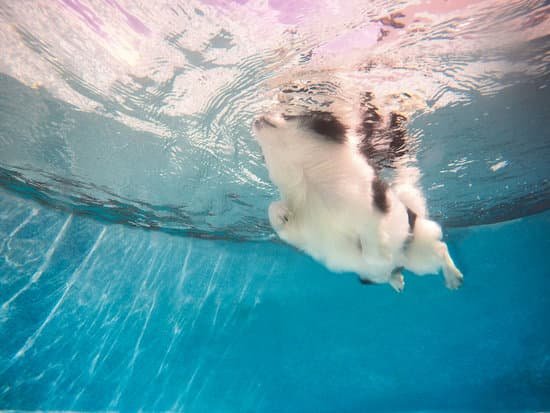Are you considering training a protective dog but unsure where to start? Understanding how to train a protective dog is crucial for both the safety of those around them and the mental well-being of the dog itself. This article will provide you with the essential information and techniques needed to properly train and socialize your protective canine companion.
Selecting the right breed is crucial, as it can greatly impact your success in training a protective dog. While some breeds naturally excel in protective roles, others may require more guidance and supervision. Basic obedience training is also fundamental, as it sets the groundwork for building a strong relationship between you and your dog. Socializing your protective dog is equally important, ensuring they are comfortable around different people, animals, and environments.
In addition to these foundational aspects of training, this article will explore advanced protection techniques, managing aggression in protective dogs, establishing trust and respect through positive reinforcement, and taking your dog’s abilities to the next level with specialized skills. Understanding the role of training a protective dog comes with its own set of rewards and responsibilities that all potential owners must be aware of.
Choosing the Right Breed
When choosing a protective dog, it’s important to consider several factors in order to ensure the best match for your needs and lifestyle. Here are some key points to keep in mind when selecting a protective dog:
Temperament
The temperament of a protective dog breed is crucial. Look for breeds that are naturally alert, confident, and loyal. It’s also important to consider the dog’s energy level and its ability to be trained and socialized. German Shepherds, Doberman Pinschers, Rottweilers, and Belgian Malinois are all known for their protective instincts and trainable nature.
Size and Strength
Consider the size and strength of the breed you’re interested in. Larger breeds such as Mastiffs or Great Danes may be physically more imposing, while medium-sized breeds like Boxers or Akitas can also be formidable protectors. Keep in mind that larger dogs may require more space and exercise.
Training Potential
Look for a breed that is known for its intelligence and trainability. Breeds like the German Shepherd and the Belgian Malinois are often used as police or military dogs due to their ability to learn complex commands and tasks. Additionally, consider whether you have the time, resources, and experience needed to train a protective dog effectively.
By taking these factors into consideration, you can make an informed decision when choosing a protective dog that will not only fit your needs but also become a beloved member of your family.
Basic Obedience Training
When training a protective dog, basic obedience is essential for their safety and the safety of those around them. Teaching your dog to follow commands and respond to cues not only ensures better behavior in public, but also strengthens your bond with your furry friend. Here are some key components of basic obedience training for protective dogs:
- Start with simple commands: Begin with basic commands such as sit, stay, come, and heel. These foundational commands will form the basis for more advanced training.
- Consistency is key: When training a protective dog, consistency is crucial. Use the same verbal cues and hand signals each time you give a command so that your dog learns to recognize and respond to them reliably.
- Reward good behavior: Positive reinforcement is an effective method for training protective dogs. Use treats, praise, or toys as rewards when your dog obeys a command correctly.
In addition to teaching basic commands, it’s important to work on leash manners and impulse control. This includes walking calmly on a leash without pulling, sitting politely when greeting people, and not jumping on furniture or guests. By establishing these rules early on, you can help prevent unwanted behavior in the future.
Socializing Your Dog
Socializing your protective dog is another critical aspect of their training. Exposing them to different people, animals, and environments from an early age can help prevent fear-based aggression and create a well-adjusted companion. Consider enrolling your dog in obedience classes or arranging playdates with other dogs to encourage positive interactions.
Socializing Your Dog
Socializing your protective dog is a crucial aspect of their training. Exposing them to different people, animals, and environments helps them develop the necessary social skills and adaptability to become a well-rounded and balanced protector. Here are some key points to consider when socializing your protective dog:
- Early exposure: It’s important to start socializing your protective dog at an early age, ideally during the puppy stage. This will help them become familiar with various stimuli and learn to interact positively with different individuals and pets.
- Exposure to diverse environments: Introducing your protective dog to various environments such as parks, busy streets, public events, and even indoor spaces will help desensitize them to unfamiliar surroundings. This can prevent anxiety or aggression in new places.
- Positive interactions: Encouraging positive interactions with other dogs, animals, and people can help your protective dog build confidence and friendly behavior. This can be achieved through supervised playdates or visits to dog-friendly spaces.
By prioritizing the socialization of your protective dog, you can ensure that they remain well-adjusted, calm, and confident in different situations. This will ultimately contribute to their ability to effectively assess potential threats while maintaining a composed demeanor. Socialization also plays an important role in preventing fear-based aggression in protective dogs.
Protection Training Techniques
Protective dog breeds are known for their ability to recognize and respond to potential threats, making them excellent guard dogs. However, proper training is essential to ensure that your protective dog can distinguish between real danger and everyday situations. There are several methods for teaching your dog to recognize and respond to potential threats effectively.
One effective method for protection training is desensitization, which involves gradually exposing your dog to various stimuli in a controlled environment. This can include loud noises, unfamiliar objects, or strangers approaching the property. By introducing these stimuli in a safe and controlled manner, you can help your dog become familiar with them and learn not to react aggressively unless there is a genuine threat.
Another important aspect of protection training is teaching your dog reliable obedience commands such as “watch,” “alert,” and “stand down.” These commands will enable you to communicate with your dog during potential threatening situations, directing their response and ensuring that they do not act impulsively or aggressively without cause.
Additionally, positive reinforcement techniques are crucial for teaching protection behaviors. Rewarding your dog for appropriate responses to potential threats will reinforce their protective instincts while also strengthening the bond between you as their owner. With consistent training and positive reinforcement, you can effectively teach your protective dog to recognize and respond to potential threats in a controlled and appropriate manner.
| Protection Training Method | Description |
|---|---|
| Desensitization | Gradually exposing the dog to various stimuli in a controlled environment. |
| Obedience Commands | Teaching reliable commands such as “watch,” “alert,” and “stand down.” |
| Positive Reinforcement | Rewarding the dog for appropriate responses to potential threats. |
Building Trust and Respect
Building a strong bond with your protective dog is crucial in ensuring its effectiveness as both a guardian and a companion. Positive reinforcement and consistency are key elements in establishing trust and respect between you and your dog. By using rewards such as treats, praise, and playtime, you can reinforce good behavior and strengthen the bond with your protective dog. This will also help to build their confidence and willingness to listen to your commands.
Consistency is equally important when training a protective dog. Using the same cues, commands, and methods consistently will help your dog understand what is expected of them. This predictability will make them feel more secure, leading to a stronger sense of trust towards their owner. Additionally, being consistent in their routine and training schedule can further solidify the bond between you and your protective dog.
Moreover, spending quality time with your protective dog is essential for building trust and respect. Engaging in activities such as playing games, going for walks, or simply spending time together can create a deeper connection between you and your pet. This bonding time also allows you to better understand your dog’s personality and behavior, which can be valuable in their overall training and development as a protective companion.
| Element | Description |
|---|---|
| Positive Reinforcement | Using rewards such as treats, praise, and playtime to reinforce good behavior |
| Consistency | Using the same cues, commands, and methods consistently to help the dog understand what is expected of them |
| Bonding Time | Engaging in activities such as playing games or going for walks to create a deeper connection between owner and pet |
Handling Aggression
Recognizing Aggression
Before addressing how to handle aggression in protective dogs, it is important to first recognize the signs of aggression. These may include growling, baring teeth, snapping, and lunging. It is crucial for dog owners to be able to distinguish between protective behavior and aggressive behavior in their dogs. While protective behavior is based on a sense of loyalty and territorial instinct, aggressive behavior is characterized by a more threatening and unpredictable nature.
Management Techniques
One of the key aspects of handling aggression in protective dogs is management. This involves understanding your dog’s triggers and avoiding situations that may cause them to become aggressive. For example, if your dog becomes aggressive when meeting unfamiliar people or animals, it is essential to manage their interactions by controlling their environment and limiting exposure until they can be properly trained and socialized.
Redirecting Aggressive Behavior
In addition to managing aggression, it is important to redirect the behavior through positive reinforcement and training. This may involve teaching alternative behaviors that are incompatible with aggression, such as sitting or focusing attention on the owner when encountering potential triggers. Through consistent training and positive reinforcement, it is possible to redirect the natural protective instincts of the dog into more controlled and manageable responses.
As a responsible owner of a protective dog, understanding how to handle aggression is essential for ensuring the safety of both your dog and others. By recognizing signs of aggression, implementing management techniques, and redirecting aggressive behavior through training, owners can help their protective dogs become well-behaved and reliable companions.
Advanced Training
Once your protective dog has mastered the basic obedience and protection training, you may want to consider advanced training to further enhance their protective abilities. Advanced training can help your dog develop specialized skills and techniques that are useful in various situations where their protective instincts are needed.
One important aspect of advanced training for protective dogs is desensitization to various stimuli. This involves exposing your dog to different scenarios, environments, and distractions that they may encounter in real-life situations. By gradually introducing them to these stimuli and ensuring they remain calm and focused, you can hone their ability to maintain composure and respond effectively when faced with potential threats.
Another advanced skill that can be beneficial for protective dogs is scent detection training. Teaching your dog to recognize and alert to specific scents related to danger or intruders can provide an added layer of security. With proper training, they can learn to identify potential threats based on scent alone, making them even more valuable as a protective companion.
Furthermore, advanced obedience training can include off-leash control, long-distance recall, and precise command execution. These skills allow your dog to respond swiftly and accurately in any situation, giving you greater confidence in their ability to protect you and your property. Additionally, specialized techniques such as bite work and apprehension training may be considered for certain breeds with strong protective instincts, under the guidance of a professional trainer.
Conclusion
In conclusion, training a protective dog can be a rewarding but responsible undertaking. Choosing the right breed is essential, as each dog has its own unique characteristics and temperament. Basic obedience training and socialization are foundational elements that will set the stage for more advanced protection training techniques. Building trust and respect with your dog is crucial in establishing a strong bond and ensuring successful training outcomes.
Moreover, handling aggression in protective dogs requires patience, consistency, and proper management techniques. It’s important to seek professional help if needed to address any aggressive behavior effectively. Advanced training can take your dog’s protective abilities to the next level, providing even greater security and peace of mind.
Training a protective dog comes with great rewards, as they can provide a sense of safety and companionship. However, it also entails significant responsibilities. Owners must ensure that their dogs are well-behaved and under control at all times. Ultimately, the dedication put into training a protective dog will result in a loyal and reliable companion that can contribute positively to the safety and well-being of their owners.
Frequently Asked Questions
How Do You Train a Dog That Is Too Protective?
Training a dog that is too protective requires a combination of obedience training, socialization, and desensitization to help them feel more at ease in various situations. It’s important to establish yourself as the pack leader and set boundaries for their protective behavior with consistent reinforcement and positive rewards for calmer responses.
How Do You Train a Dog for Protection?
When training a dog for protection, it’s crucial to seek professional guidance from a qualified trainer who specializes in protection work. This type of training should only be undertaken with certain breeds and individuals with the right temperament and drive.
The process involves teaching the dog controlled aggression, advanced obedience commands, and specific guarding behaviors through careful guidance and structured training sessions.
How Do You Stop Your Dog From Guarding You?
To stop your dog from guarding you, it’s essential to address the underlying issues causing this behavior such as fear or separation anxiety. Working with a professional trainer can help modify your dog’s behavior by teaching them cues for when it’s appropriate to guard or not, as well as building their confidence in various situations through positive reinforcement techniques.
Additionally, creating a safe environment where they feel secure on their own can also help eliminate guarding tendencies over time.

Welcome to the blog! I am a professional dog trainer and have been working with dogs for many years. In this blog, I will be discussing various topics related to dog training, including tips, tricks, and advice. I hope you find this information helpful and informative. Thanks for reading!





